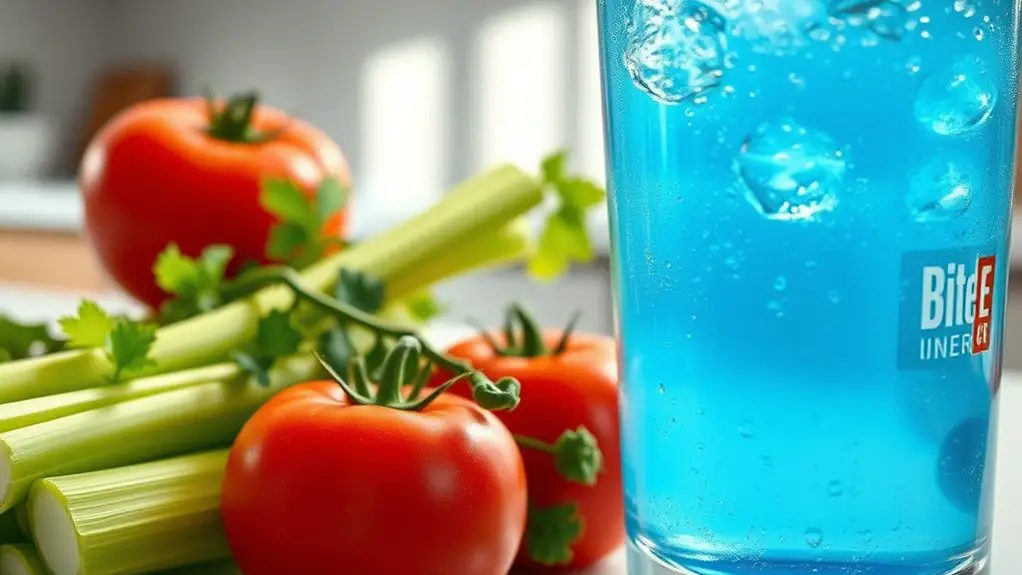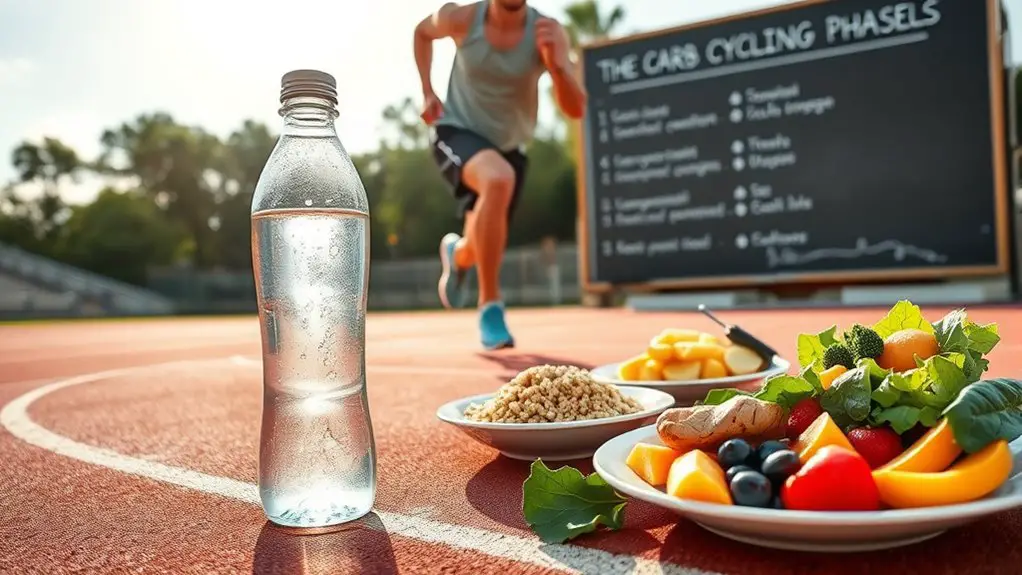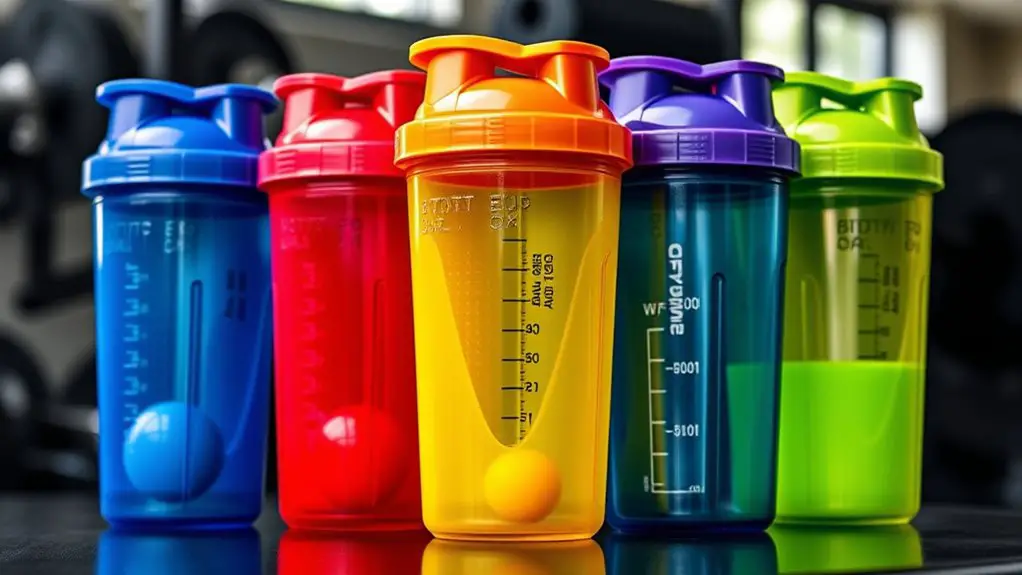To manage sodium levels for hydration balance, focus on your daily intake. Aim for around 2,300 mg unless you have specific health conditions, like hypertension. Incorporate fresh foods and herbs to reduce salt while still flavoring your meals. Stay hydrated, especially if you're active, and monitor for signs of imbalance, like headaches or dizziness. Balancing your electrolytes is key for overall energy and hydration. There's a lot more to explore about sodium management and hydration tips.
Understanding Sodium's Role in the Body
Sodium plays an essential role in maintaining your body's fluid balance, as it helps regulate blood pressure and supports nerve function. You need sodium to keep your cells hydrated and guarantee that your muscles and nerves work properly. When you consume sodium, it interacts with water in your body, helping to maintain the right balance and prevent dehydration. This balance is critical for your overall health and energy, allowing you to enjoy life without feeling sluggish. When you understand sodium's importance, you can make better choices about your diet and hydration. Striking the right balance gives you the freedom to engage in activities you love while keeping your body functioning at its best. Embrace the power of sodium for a vibrant, energetic life!
Signs and Symptoms of Sodium Imbalance
How can you tell if your sodium levels are off? You might notice some telltale signs. If you feel unusually thirsty, have a dry mouth, or experience headaches, it could indicate low sodium. Conversely, if you're feeling confused, dizzy, or have muscle cramps, that might point to high sodium levels. Rapid heartbeat and swelling in your hands or feet can also signal an imbalance. Pay attention to your body's signals; it's your freedom to feel good and stay energized. Ignoring these symptoms can lead to bigger issues, so stay in tune with what your body's telling you. Knowing these signs allows you to take charge of your hydration and maintain that balance you crave.
Recommended Daily Sodium Intake
For most adults, the recommended daily intake of sodium is about 2,300 milligrams, which is roughly one teaspoon of table salt. Staying within this limit can help you maintain hydration balance and overall health. However, if you've got specific health conditions, you might need to adjust that number. Here's a quick guide:
| Sodium Intake Level | Description |
|---|---|
| 2,300 mg | General recommendation |
| 1,500 mg | For those with hypertension |
| 3,000 mg | Athletes or high activity |
| Less than 2,300 mg | Ideal for certain conditions |
Food Sources of Sodium
You might be surprised to learn that many common foods contain significant amounts of sodium. Processed and packaged foods often top the list. Think about snacks like chips and pretzels, or canned soups and sauces—these can pack a hefty sodium punch. Even seemingly innocent items like bread and deli meats can contribute more sodium than you might expect. Condiments, such as soy sauce and ketchup, can also elevate your sodium intake without you realizing it. If you enjoy dining out, restaurant meals frequently contain added sodium for flavor. Being aware of these sources helps you take charge of your sodium consumption. Embracing fresh, whole foods can empower you to balance your sodium levels while enjoying your meals freely.
Strategies for Reducing Sodium Intake
While reducing sodium intake might seem challenging, there are several effective strategies you can adopt to make it easier. Start by reading nutrition labels carefully and opting for low-sodium versions of your favorite products. Cooking at home gives you control over ingredients, so experiment with fresh herbs and spices instead of salt. When dining out, don't hesitate to request no added salt in your meals.
Here's a quick reference table to guide your choices:
| Food Type | High-Sodium Options | Low-Sodium Alternatives |
|---|---|---|
| Snacks | Potato chips | Air-popped popcorn |
| Condiments | Soy sauce | Low-sodium soy sauce |
| Canned Foods | Canned soup | Low-sodium canned soup |
| Processed Meats | Bacon | Grilled chicken |
| Frozen Meals | Frozen pizza | Homemade veggie stir-fry |
With these tips, you'll find it easier to enjoy your food while managing sodium intake!
Importance of Electrolyte Balance
Electrolyte balance is essential for maintaining hydration and supporting various bodily functions, especially when you're active or in hot weather. When you sweat, you lose not just water but crucial electrolytes like sodium, potassium, and magnesium. These minerals help regulate fluid balance, muscle contractions, and nerve function. If your electrolyte levels dip too low, you may feel fatigued, dizzy, or experience muscle cramps—definitely not what you want when pursuing your freedom. Staying mindful of your electrolyte intake can help you feel energized and perform at your best. So, whether you're hitting the gym or enjoying outdoor adventures, keep your electrolytes in check. It's all about achieving that perfect balance to thrive and enjoy life to the fullest!
Hydration Tips for Active Lifestyles
Maintaining proper hydration is essential, especially when you're leading an active lifestyle. To keep your energy up and performance on point, drink water before, during, and after your activities. Don't wait until you're thirsty—make hydration a habit. Carry a reusable water bottle with you to stay on track. If you're sweating a lot, consider electrolyte drinks to replenish lost minerals. Balance your fluid intake with your activity level; longer workouts may require more hydration. Enjoy hydrating foods like fruits and veggies, too! Listen to your body; it knows what it needs. By prioritizing hydration, you'll not only feel great but also enjoy the freedom to push your limits without worry. Get out there and conquer your adventures!
Monitoring Sodium Levels Effectively
How can you effectively monitor your sodium levels to support hydration? Start by tracking your daily sodium intake through food labels and apps. Aim for balance; you don't want to overdo it. Pay attention to how you feel—symptoms like headaches or fatigue could signal an imbalance. If you're active or sweat a lot, consider keeping an eye on the salt content of your electrolyte drinks. Regularly check your urine color; a light yellow usually indicates proper hydration, while darker shades might mean you need to adjust your sodium intake. Finally, create a routine for evaluating your diet and hydration needs. By tuning into your body and staying informed, you can enjoy a more liberated and energized life.
When to Seek Professional Help
While monitoring your sodium levels is essential for hydration, there are times when seeking professional help becomes necessary. If you experience symptoms like confusion, muscle cramps, or excessive thirst, it's wise to consult a healthcare professional. Additionally, if you have underlying health conditions such as kidney disease or heart issues, don't hesitate to reach out.
| Symptoms to Watch For | Action to Take |
|---|---|
| Confusion | Seek medical attention |
| Muscle cramps | Consult a healthcare provider |
| Excessive thirst | Get professional advice |
Taking control of your health is empowering, but know when to ask for help. Your well-being is a priority, and healthcare experts can guide you toward a balanced sodium level.
Frequently Asked Questions
Can Sodium Levels Affect My Mood and Mental Clarity?
Yes, sodium levels can definitely affect your mood and mental clarity. When they're too low or too high, you might feel irritable or foggy. Keeping them balanced is key for your overall mental well-being.
How Does Sodium Intake Vary for Different Age Groups?
Did you know that kids aged 1-3 should only consume about 1,500 mg of sodium daily? As you age, your needs change, with adults recommended around 2,300 mg, emphasizing balance for ideal health and freedom.
Is Sodium Intake More Important for Athletes Than Non-Athletes?
Yes, sodium intake's essential for athletes, as it helps maintain fluid balance during intense workouts. Non-athletes don't sweat as much, so their needs are lower. You'll benefit from tailored sodium intake based on your activity level.
Can I Use Salt Substitutes for Sodium Management?
Sure, you can use salt substitutes! They're like magical sprinkles that keep your flavor alive without the sodium overload. Just remember, not all substitutes are created equal—some can be a bit sneaky with potassium!
What Are the Long-Term Effects of High Sodium Consumption?
High sodium consumption can lead to serious health issues, like hypertension and heart disease. You might experience increased blood pressure and risk of stroke, so it's wise to monitor your intake for long-term well-being.




